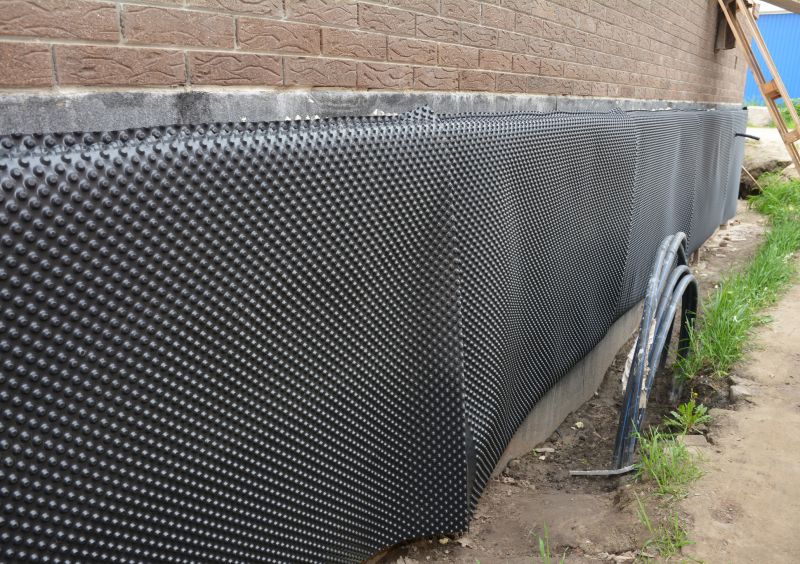Leading Foundation Damp Proofing Solutions For Effective Moisture Control
Find out which damp proofing products are trusted by experts to keep your foundation dry and free from moisture-related issues.
 Foundation damp proofing is a crucial aspect of maintaining the structural integrity and longevity of a building. It involves applying various products designed to prevent moisture from penetrating the foundation walls and floors, which can lead to issues such as mold growth, wood rot, and weakening of the structural components. Proper damp proofing not only helps preserve the building's stability but also contributes to healthier indoor air quality by reducing mold and mildew risks.
Foundation damp proofing is a crucial aspect of maintaining the structural integrity and longevity of a building. It involves applying various products designed to prevent moisture from penetrating the foundation walls and floors, which can lead to issues such as mold growth, wood rot, and weakening of the structural components. Proper damp proofing not only helps preserve the building's stability but also contributes to healthier indoor air quality by reducing mold and mildew risks.
Top Overall Option
Flexible Waterproofing Membrane
A versatile and durable membrane designed to provide effective moisture barriers on foundation surfaces. Its flexible nature allows it to accommodate minor shifts and cracks, maintaining a continuous waterproof layer. Suitable for various foundation types, it can be applied via spraying or troweling, offering a reliable solution for both new builds and repairs.
Types of Products For Foundation Damp Proofings
Liquid Rubber Coatings
Elastic liquid coatings that form seamless waterproof layers on foundation surfaces, ideal for cracks and irregular shapes.
Bituminous Waterproofing Membranes
Self-adhesive or torch-applied membranes offering robust moisture barriers, commonly used in basement waterproofing.
Polyurethane Sealants
Flexible sealants used to fill cracks and joints in foundations, preventing water ingress.
Cementitious Waterproof Coatings
Waterproof cement-based coatings that bond well with concrete and masonry surfaces for long-lasting protection.
Waterproofing Paints
Specialized paints that create a water-resistant barrier on foundation walls, easy to apply for surface protection.
Sheet Membranes
Pre-formed sheets made of bituminous or rubber materials that are adhered to foundation surfaces for continuous waterproofing.
Hydrophobic Injectables
Injectable solutions that penetrate concrete to reduce porosity and resist water movement from within the foundation.
Crack Repair Epoxies
Epoxy-based products used to seal and reinforce cracks in foundation walls, preventing water entry.
Drainage Boards
Protective panels installed on foundations to facilitate water drainage and reduce hydrostatic pressure.
Waterstop Products
Materials used to seal construction joints and prevent water passage through joints and cracks.
Popular Choices
Widely used for its adaptability and ease of application, suitable for various foundation types.
Commonly favored for their durability and strong moisture barrier properties in basement projects.
Popular for sealing minor cracks and preventing water seepage in existing foundations.
Chosen for their ease of use and surface protection, especially in retrofit applications.
Effective in reducing water permeability from within concrete structures, trending in repair projects.
Preferred for their reliable, continuous barrier and ease of installation in new constructions.
Popular for their compatibility with existing concrete structures and long-lasting performance.
Often used to improve water management around foundations, reducing hydrostatic pressure.
Commonly installed at construction joints to prevent water passage through joints.
There is a wide array of products available for foundation damp proofing, each suited to different types of foundations and environmental conditions. These include liquid membranes, bituminous coatings, sealants, and waterproofing membranes. Selecting the right product depends on factors such as the foundation material, the extent of dampness, and the specific requirements of the project. Many of these products are designed for easy application, whether through brushing, spraying, or troweling, making them accessible for both professional contractors and DIY enthusiasts.
In addition to traditional waterproofing solutions, there are innovative products that incorporate advanced sealing technologies or flexible materials to accommodate minor shifts and cracks in the foundation. Some products are formulated to be breathable, allowing moisture vapor to escape while preventing water ingress, which can be beneficial in certain climates. Proper surface preparation and application techniques are essential to ensure the effectiveness of any damp proofing product, and following manufacturer instructions is always recommended.
Investing in quality damp proofing products can extend the lifespan of a building's foundation and reduce long-term repair costs. Regular inspection and maintenance, combined with the right product choices, can help manage moisture issues proactively. Whether you are undertaking a new construction project or addressing existing dampness, understanding the variety of available products and their applications is vital to making informed decisions that support the structural health of your property.
Key Buying Considerations
- Compatibility with foundation material such as concrete, masonry, or stone.
- Type of moisture issue, whether seepage, rising damp, or internal humidity.
- Ease of application, including whether the product can be applied by brush, spray, or trowel.
- Flexibility and ability to accommodate minor foundation movements or cracks.
- Durability and resistance to environmental conditions like temperature fluctuations and chemical exposure.
- Surface preparation requirements to ensure optimal adhesion and effectiveness.
- Coverage area and whether the product is suitable for the size of the project.
- Compatibility with existing waterproofing or damp proofing systems if retrofitting.
- Long-term performance and maintenance needs to ensure ongoing protection.
- Safety considerations, including VOC content and handling precautions.
- Cost and budget constraints relative to project scope and quality expectations.
- Manufacturer reputation and product reviews for reliability and consistency.
- Application time and drying/curing periods for project scheduling.
- Environmental conditions during application, such as humidity and temperature.
